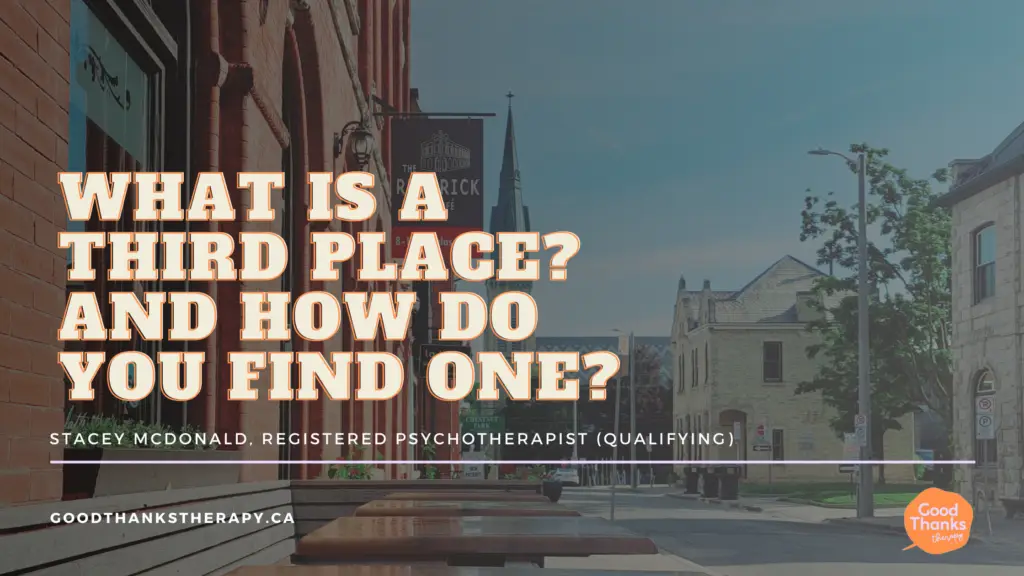Burnout Counselling Ontario
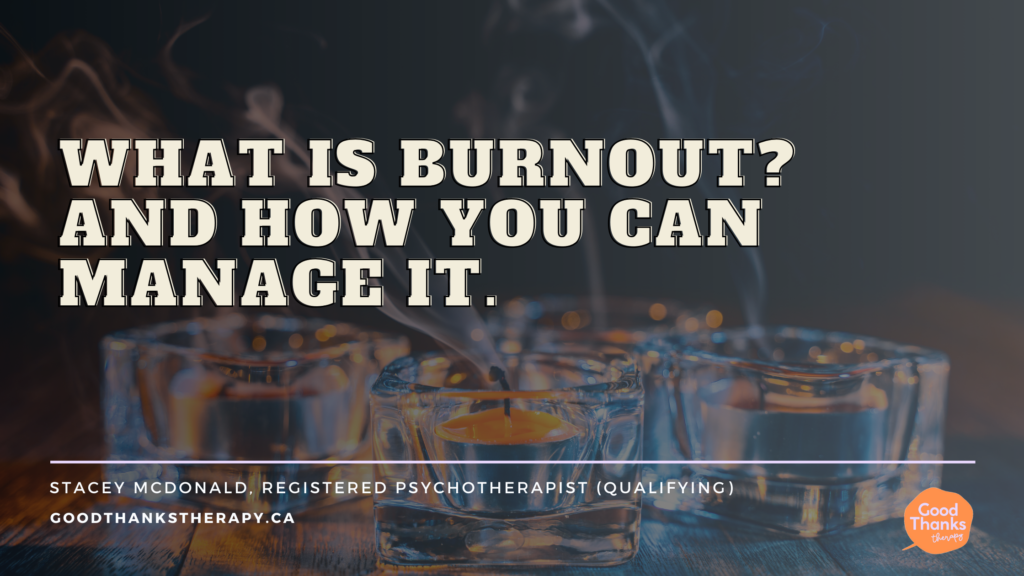
Burnout – you’ve heard the word more and more over the years, and I’ve even talked a bit about it in the context of chronic pain/illness and the holidays in previous blogs, but what exactly is it? While burnout started as what they considered an “occupational phenomenon” has now expanded to how we understand reaching a peak level of exhaustion – mentally, physically, emotionally. But that’s too broad a definition, isn’t it? How would you even know if you’re feeling the effects of burnout or just exhausted for other – normal and understandable reasons? Let’s dive into that, shall we?
Why Are We Talking About Burnout?
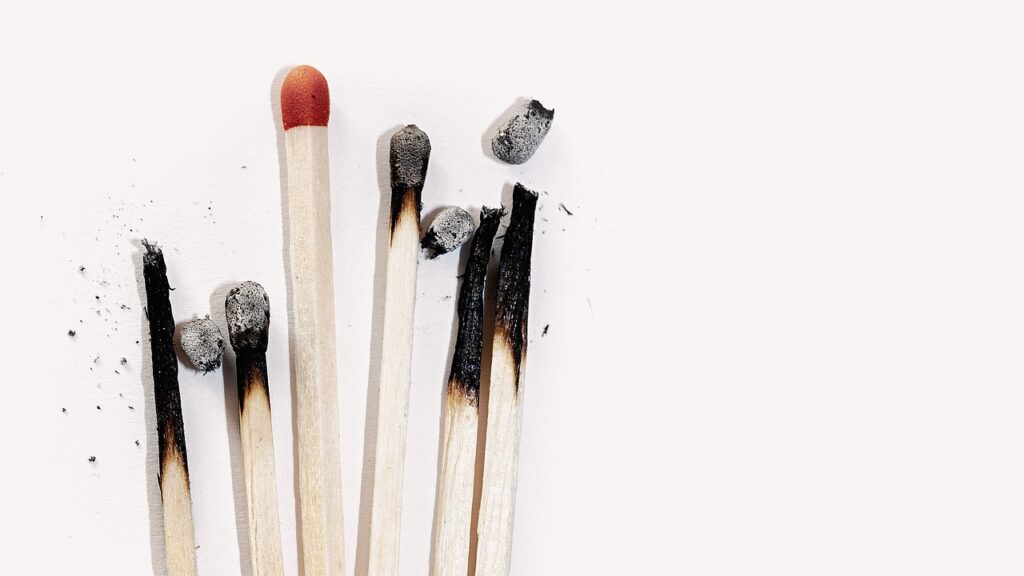
Image by Thomas Ulrich from Pixabay
The year hasn’t even begun, Stacey, give us a chance! What do you mean? What better way to start the New Year than by talking about burnout?! No, but really, I hear you. Yet at the same time, the New Year can mean a few things for burnout (and stress in general).
- Whether it’s work, lifestyle or school – the New Year can be an actual “reset” for many of us. A new semester starts, maybe your work starts a new fiscal year, or you just simply like to set goals and intentions at the start of a year. With this “reset” comes the opportunity for you to get in on the ground floor, so to speak, and set yourself up for better managing stress, and thus burnout throughout the year.
- Like I talked about in my holiday post, the holiday season for many isn’t actually all that joyous, relaxing, restoring, and whatever other narrative we’re sold about what the holiday period means. While for some, it may mean a time to slow down and recover from the stresses of the year, for many others the burnout keeps on burning (and the match may be burning itself down even quicker) with the expectations and rush of the holidays.
- It’s always a good time to talk about burnout. 🙂
Additionally, in Canada, surveys have shown that burnout is on the rise with nearly 70% of Canadians surveyed showing since of pre-burnout symptoms with 1 in 4 reporting burnout. These same surveys show that lack of resources at work (staff shortages, lack of funding, pandemic related concerns) and heavier workloads being expected are main reasons for feelings of burnout especially in education and healthcare. When signs of burnout start in the workplace, any additional stressors and responsibilities often become more difficult to manage and thus leading to additional stress (and burnout). Simply put, we don’t have the systems in place currently (thank you Capitalism) to foster healthy relationships with work and responsibilities thus leading to increased pressure and long-term chronic stress.
So, What is Burnout?

Photo by Anna Tarazevich on Pexels
While the “technical” definition still sees burnout as an occupational phenomenon, you’ll find that most people now use burnout in a more general context. Burnout is a syndrome, which means it’s a collection of symptoms that ultimately are associated with a feeling of chronic/severe physical, mental, and emotional exhaustion. We’re not just talking about physical exhaustion after a day of hiking, or mental exhaustion after taking an exam which often resolves in a day or two. Burnout can occur for a number of reasons beyond the standard work-related overwhelm, it can happen after experiencing almost any long-term stress, especially those where you feel constantly under pressure.
What’s the Difference Between Stress and Burnout?
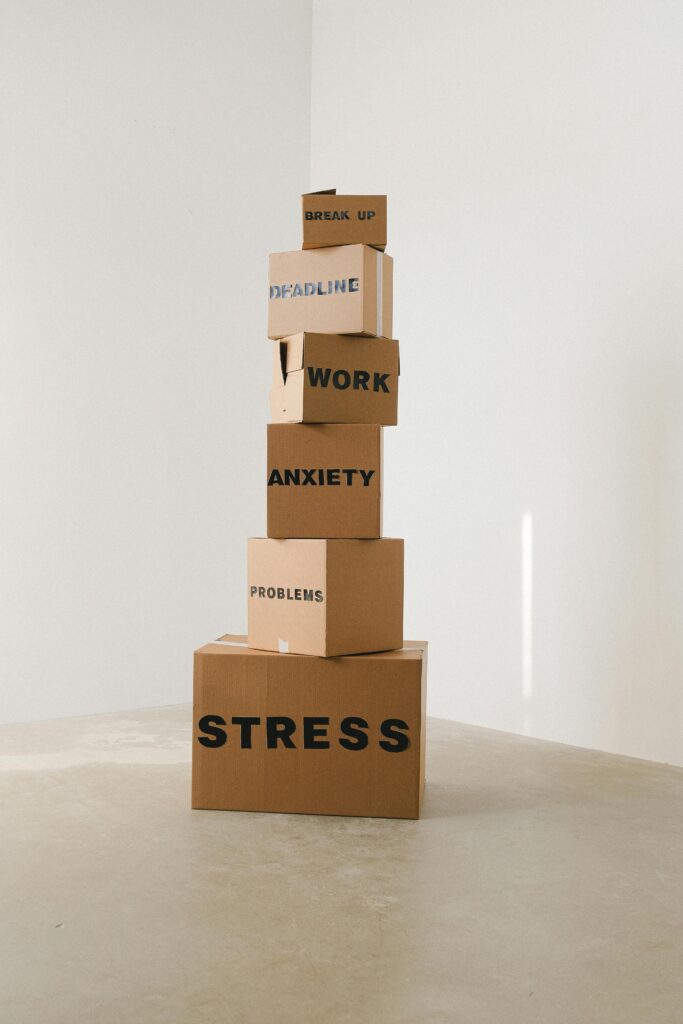
Photo by SHVETS production on Pexels
Okay, so burnout can be caused by long-term stress, but it isn’t the same as stress. This is the part where people can get confused or write off their obvious signs of burnout as “just stress” and move on like nothing happened expecting themselves to feel better. Then, surprise! That usually doesn’t happen. So what’s the difference?
Stress
The biggest difference? Stress is usually short-term. So while you may notice many of the same signs as burnout (we’ll get into that in a minute), you’re not so impacted by it that you’re unable to engage with whatever it is that’s causing you this short-term disruption.
Burnout
Burnout, by contrast, is a long-term, gradual issue. It’s often the result of repeated and/or compounding prolonged demands (stressors) that exceed your capacity. When you keep pushing through and taking on (willingly or not) additional stressors with your resources already depleted this can lead to a variety of symptoms, but most notably a feeling of demotivation and detachment – being unable to engage with things in the same way. Burnout also impacts overall functioning when it goes unmanaged. Without some sort of change or burnout support, these feelings are likely to continue and can lead to additional mental health concerns like depression and anxiety.
What Are The Signs of Burnout?

Photo by Tara Winstead on Pexels
You now know the difference between stress and burnout, but what are the signs? What symptoms should you be looking out for that signal to you that you may need some help? Symptoms of burnout fall into three categories – physical, emotional and behavioural.
Physical Symptoms of Burnout
- Feeling tired, exhausted or fatigued most of the time.
- Insomnia and sleep disturbances.
- Feeling sick, loss of appetite and GI concerns.
- High blood pressure
- Frequent illness.
- Frequent headaches.
Emotional Symptoms of Burnout
- Hopelessness, helplessness.
- Feeling trapped in your circumstances or defeated.
- Self-doubt.
- Feeling like a failure.
- Extreme overwhelm.
- Lack of motivation.
- Cynicism.
- Loss of interest and/or enjoyment in things you previously enjoyed.
- Persistent dread, worry.
- Feeling a lack of achievement, feeling stuck, lacking satisfaction.
Behavioural Symptoms of Burnout
- Procrastination.
- Lack of concentration.
- Decreased productivity.
- Withdrawing from loved ones, responsibilities, work, etc.
- Using substances, food, distractions for coping.
- Irritable, more likely to take out frustrations on others.
- Being late or not showing up for work/responsibilities.
- Sleeping more often.
It’s important to note that many of these symptoms, individually or alongside a few others on the list can mean a variety of things from physical ailments or other mental health diagnoses.
Burnout Counselling and Managing Burnout
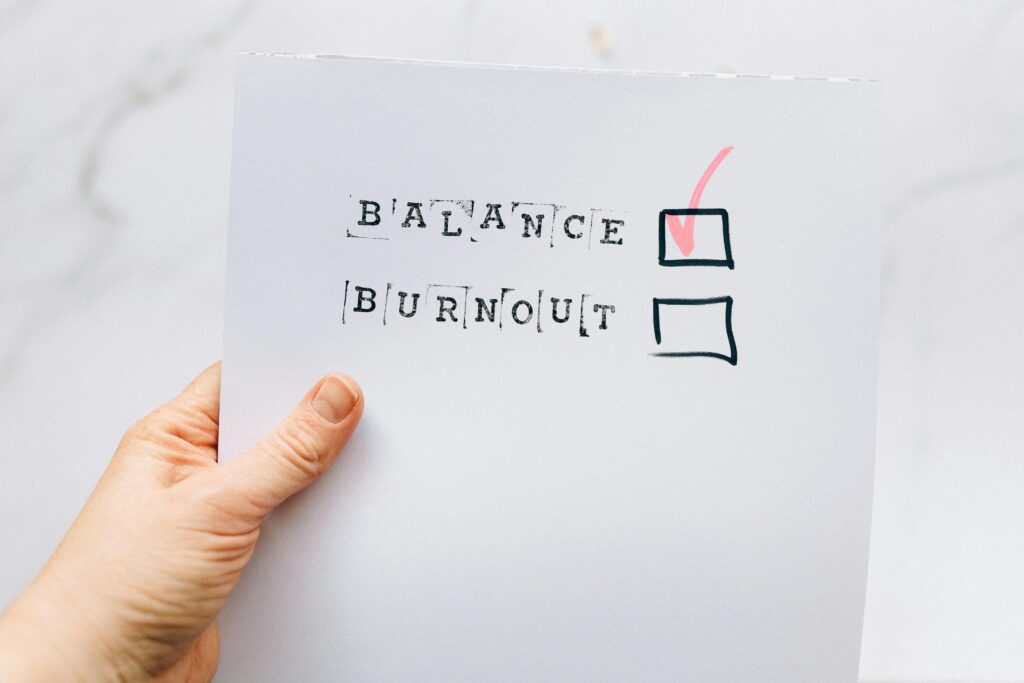
Photo by Nataliya Vaitkevich on Pexels
So, why is it important to identify burnout and take the steps necessary to manage it? Well, unlike short-term stress, burnout isn’t something that goes away on its own. If you ignore it, and leave your lifestyle, work, responsibilities as is, chances are – even if you experience brief periods of feeling better – burnout will creep back up (and usually with a vengeance).
Not only does this mean you’re constantly on the run from the more severe symptoms of burnout but there is an increased risk of you experiencing other mental health concerns as well such as depression and anxiety, and it can worsen or contribute to chronic physical health issues (heart disease, chronic pain, etc.). Leaving burnout unmanaged may also lead to poor decision making – making rash decisions at the height of hopelessness, and demotivation such as leaving your job (without thinking about the financial consequences), dropping out of a course that you need to graduate (without seeing when it’s offered next).
Burnout Support – Burnout Counselling
One step towards burnout recovery can include what I call burnout support, or burnout counselling. Many people will notice they are dealing with a lot of symptoms I listed above but struggle to name it as “burnout.” Additionally, when you’re in the depths of burnout with a lack of motivation and constant exhaustion it can feel nearly impossible to take the steps you need to in order to recover.
This is where burnout support or burnout counselling comes in. While yes, you have to find motivation to contact a therapist or other health professional if you don’t already have one, it can feel easier to motivate yourself to do that, than to figure out all the other steps to recovering from burnout yourself. So, what can a therapist do to support you with burnout recovery?

Photo by SHVETS production on Pexels
- Emotional support – a lot of the earlier work on burnout comes down to being able to let go of all of that pressure and stress you’ve been carrying on your shoulders. Typically, this starts with sharing that with someone, in this case, a therapist, and being validated and understood.
- Finding patterns, assessing coping skills, etc. – one of the things we, as humans, are great at is finding patterns – however, that usually doesn’t extend to ourselves, at least not when we’re in the throes of severe stress, burnout, depression, etc. A therapist can be there to help you identify some of the patterns that may be contributing to your continued experience of burnout, and assess your current coping mechanisms.
- Setting goals – listen, when you’re burnt out and unmotivated, it is usually going to take all the energy in the world to get you to set a goal, let alone stick to it. When you have the support of someone, like a therapist, that can take a load off and make this feel more manageable. A therapist can help you make goals, break them down to realistic chunks that you can achieve based on where you’re at now and help keep you accountable.
- Psychoeducation and skill development – a lot of burnout recovery comes down to learning about burnout and learning about YOUR burnout specifically. A therapist is a great place to get this psychoeducation and help you apply it to your current situation. Additionally, chances are there are additional skills and coping strategies that may be helpful as you start to recover and that will benefit you in the long run as you manage your risk of burnout.
- Exploration, boundaries and planning – ultimately, while it sounds counterintuitive, there is some exploration and planning that goes into burnout recovery. What I mean by this is, most of us get to the point of burnout by exceeding our resources – we’re not engaging in self-care, we’re not resting, we’re constantly on the roller coaster ride that is productivity and responsibilities. So, with that usually comes a need to plan (even schedule) these restorative practices into our lives and learn to set boundaries around our time. It’s also not uncommon for a client to tell me at this point that they have no idea what they find restful, what fills their cup because they haven’t done it in so long – this is where we do a bit of exploration.
Managing Burnout
Managing burnout includes most of what I mentioned above, but the important thing to note is that it’s not an activity that you do once, recover, and that’s it, you’re cured! The fact of the matter is, our society, systems, work environments, etc. are currently geared towards productivity and profit, and that means – there are things you can’t control that are likely to continue to put you at risk of burnout. Not to mention, life happens – sometimes life happens a lot, all at once.
So, once you’ve gotten a grip on burnout, you feel like you’re on the other side it’s time to start making sure the changes you made to get here stick. This can mean long-term lifestyle changes, boundaries, maybe even a change of work. This is something you need to evaluate for yourself – the support of a loved one or therapist can be helpful here to talk things out, and then you need to commit. I don’t mean that in a way that puts pressure on you (that’s how we got here), but it’s easy to fall back on old habits (the one that lead to burnout in the first place) so we need to set ourselves up for success, so to speak – whether that’s continuing to schedule self-care and other restorative activities, reinforcing boundaries, or changing the way you engage with work or other responsibilities.
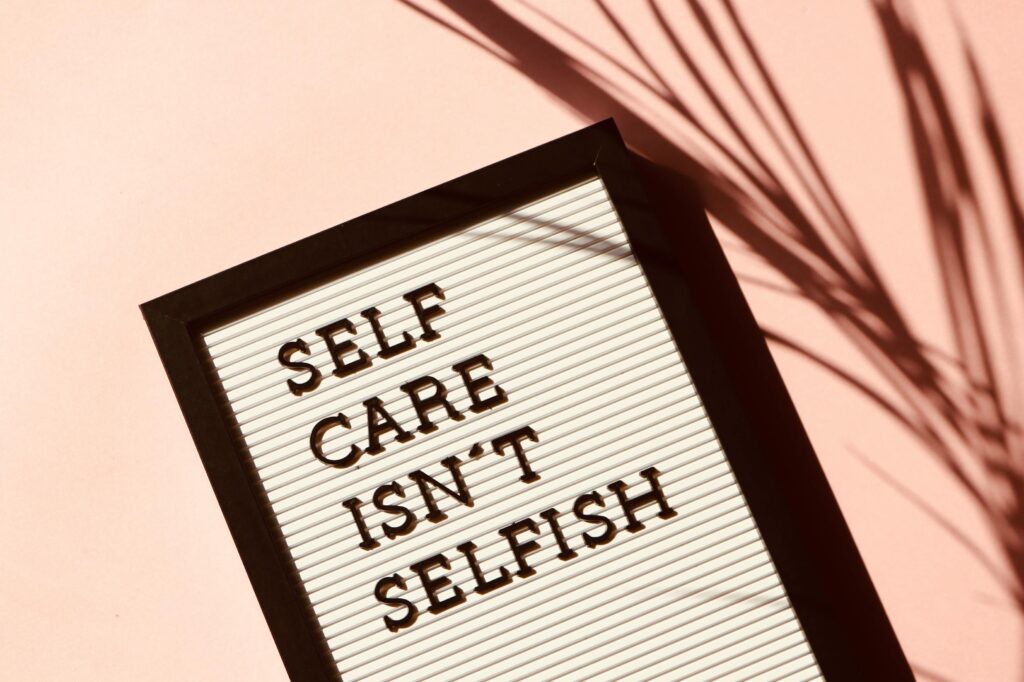
Photo by Madison Inouye on Pexels
Conclusion
Burnout is prevalent and on the rise. While it’s being talked about more in recent years, there’s still a stigma surrounding it, and we’re still taught to “power through.” Unfortunately, unlike short-term stress, burnout won’t go away without intervention and change. That’s where burnout counselling can be helpful – a therapist can help you identify burnout, work towards recovering from it and then helping you set yourself up to manage it long term.
Looking for burnout support? I’m accepting new clients! I have in-person availability in Guelph and virtual availability across Ontario. Book a FREE consult to see if we’re the right fit.

